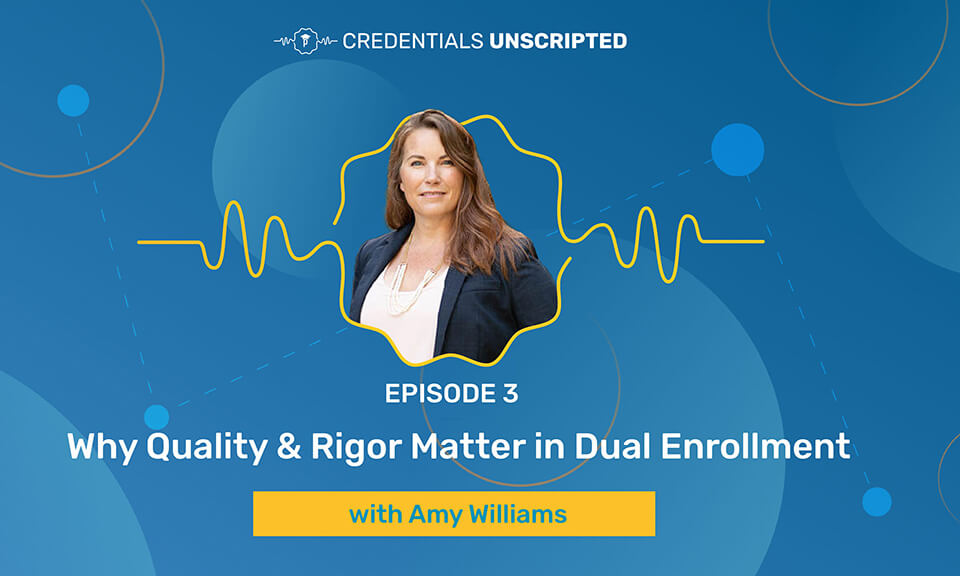
Higher Ed
Collaboration for Completion: Expanding Access With Course Sharing Infographic
Course availability is a barrier to on-time graduation. Learn how course sharing helps learners stay on track and simplifies processes for institutions.
We use cookies to help you navigate efficiently and perform certain functions. You will find detailed information about all cookies under each consent category below.
The cookies that are categorized as "Necessary" are stored on your browser as they are essential for enabling the basic functionalities of the site. ...
Necessary cookies are required to enable the basic features of this site, such as providing secure log-in or adjusting your consent preferences. These cookies do not store any personally identifiable data.
Functional cookies help perform certain functionalities like sharing the content of the website on social media platforms, collecting feedback, and other third-party features.
Analytical cookies are used to understand how visitors interact with the website. These cookies help provide information on metrics such as the number of visitors, bounce rate, traffic source, etc.
Performance cookies are used to understand and analyze the key performance indexes of the website which helps in delivering a better user experience for the visitors.
Advertisement cookies are used to provide visitors with customized advertisements based on the pages you visited previously and to analyze the effectiveness of the ad campaigns.
Other cookies are those that are being identified and have not been classified into any category as yet.

Dual-enrollment programs have become an increasingly popular option for high school students looking to get a head start on their college education. These programs offer the opportunity to earn college credits while still in high school, providing students with a taste of the college experience and potential cost- savings. However, not all dual-enrollment programs are created equal. The rigor of these programs can vary significantly, and it’s essential to understand why. On a recent episode of Credentials Unscripted, we spoke with Amy Williams, Executive Director of the National Alliance of Concurrent Enrollment Partnerships (NACEP), about NACEP’s role in the field and the importance of quality dual enrollment.
NACEP is the first and only national organization that exists to support programs, practitioners, and policy to advance quality dual and concurrent enrollment. They set the standards and provide accreditation for dual-enrollment programs, which in turn ensures that students receive a meaningful and rigorous educational experience.
Amy Williams emphasizes the importance of NACEP in the field of dual enrollment by saying, “NACEP plays a vital role in establishing and maintaining the quality of dual-enrollment programs across the country. Their accreditation process ensures that participating high schools and colleges meet specific standards, which is crucial for maintaining the integrity of dual enrollment.” To make an assessment of quality and rigor, NACEP looks at many factors, including: curriculum quality, instructor qualifications, and program administration. Schools that meet these standards receive accreditation, which serves as a mark of excellence in dual enrollment.
Many states are heavily invested in advancing dual enroldual-enrollmentndt opportunities for students, but gaps remain in terms of policy and standards for what these programs should look like. NACEP’s National Quality Standards establish a framework for adoption to guide practitioners on how to build valuable dual-enrollment programs. Amy says, “Our National Quality Standards play an important role in filling the hole in state policy, specifically addressing what you should be doing with students if you are offering these programs, as well as another kind of oversight as regional accreditors for institutions of higher education.”
Now, let’s delve deeper into why quality and rigor matter in dual-enrollment programs.
One of the primary objectives of dual enrollment is to prepare high school students for the challenges they will face in college. To achieve this, it is vital that dual enrollment courses mirror the academic standards and expectations of college-level coursework. Amy Williams highlights this point by saying, “Why is program quality critical? I would say, ‘When doesn’t quality matter?’ We don’t want to give students a false bill of goods. If you take a class, you want to know that the integrity was there and that the elements you learned are useful and productive and stackable on further knowledge later in your academic career.”
When dual-enrollment programs lack quality and rigor, students may find themselves ill-prepared for the academic challenges of college. In such cases, the experience may not provide the intended benefits of saving time and money, as struggling students might need to retake courses in college.
Additionally, participating in a high-quality, rigorous dual-enrollment program can boost students’ motivation and confidence. When they successfully complete challenging courses, they gain a sense of accomplishment and self-assurance that can carry over into their college experience.
Earning college credit in high school is a significant advantage of dual enrollment. However, the quality and rigor of the courses matter when it comes to transferring these credits to different colleges and universities. Many institutions have specific standards for accepting dual-enrollment credits, and low-quality programs may not meet these criteria.
Inadequate programs may leave students with a limited choice of colleges that will accept their dual-enrollment credits. This can restrict their future educational opportunities and potentially negate the benefits of participating in dual enrollment.
Dual-enrollment programs are expanding across the United States, presenting a unique opportunity to give students access to college courses while in high school. With this growth, it’s important to consider how dual-enrollment programs are designed and administered so that they deliver on the promise of improving a student’s ability to advance to their next educational and professional opportunity. NACEP believes strongly that quality standards and accreditation will help dual enrollment fulfill its intended mission, as Amy points out, “Our organization was built to provide structure and best practice to what’s become this now very popular and powerful grassroots disrupter of the status quo in American education.”
